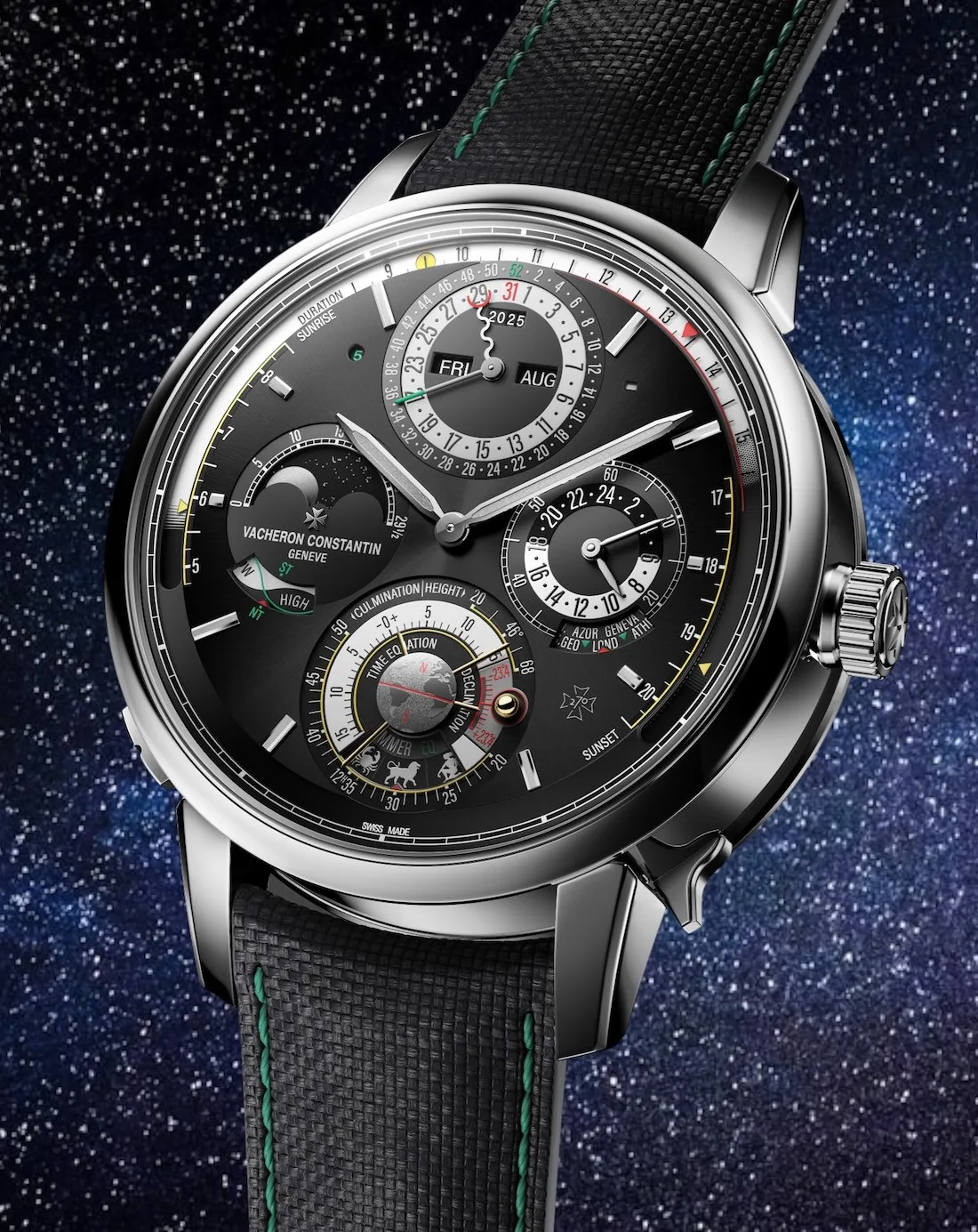The Genius of Greubel Forsey’s Quantième Perpétuel À Équation watch.
It is arguably the oldest complication in horology. If studies of the Antikythera mechanism are correct, then horologists and scientists have been working on the problem of a perpetual calendar since 87 BC. The Antikythera mechanism was an ancient Greek analogue computer that could predict astronomical positions and eclipses for calendar and astrological purposes decades in advance. At some point in antiquity, the knowledge of such mechanisms was lost.
But around the fourteenth century in Europe, work on mechanical astronomical clocks started again. While Thomas Mudge produced a perpetual calendar pocket watch as early as 1762, the wristwatch form did not appear until 1927 by Patek Philippe, for the renowned collector Thomas Emery. It took another 14 years (1941) to serially produce the complication with the reference 1526. Improvements have been slowly implemented ever since; however, despite all the work, perpetual calendar watches still require additional pushers on the side to adjust the date functions every now and then. The problems that have been inherent in the mechanism from the beginning still persisted… until now.
With their Quantième Perpétuel À Équation (or QP for short), Greubel Forsey present the only global solution to the three problems that are generally found in perpetual calendar watches.
The first is the idiosyncratic nature of the Gregorian calendar: seven days a week, varying days a month within each year, and varying days per month and year. Consider the day and date: five times a year the day and date change are different. Only seven months out of the twelve have 31 days. So, if January 31 falls on a Wednesday, February 1 will fall on a Thursday. But, February 28 falls on a Wednesday. Without 31 days in each month, the mechanical perpetual calendar must now know that the next date is March 1 and that will fall on the next day: Thursday. And that is for the non-leap year. Every four years the mechanism must equally account for the addition of February 29.

The second is that the gear arrangement for a perpetual calendar assumes time always moves forward. With the advent of modern jet travel, perpetual calendars have potentially required the ability to wind time backwards or forwards across time zones – and especially across the international date line. All other perpetual calendars have a series of gears arrayed laterally across the watch’s mechanism so gears that activate the date elements (day, date and month) must be synchronised. The lateral gearing assumes time moves forward and hence the gears and the mechanism between them move forward too. Moving backwards presents a problem though, because the perpetual calendar assumes, as its name implies, that it will perpetually move forwards.
The third is that perpetual calendars cannot stop for any amount of time without adjustment back to the correct time and date being cumbersome and laborious. If the watch ever stops, because it remains unworn for a while, there is the need to wind forward for some time to catch up with the correct day and date (and perhaps even year!). For this reason, most modern perpetual calendar watches have an automatic winding movement and pushers to quickly adjust date functions.

To overcome the problems inherent in the perpetual calendar, Greubel Forsey did something unique and original: they stacked the perpetual calendar gears vertically instead of laterally, in what is essentially an “equation of time gearbox”. This gearbox does several things to remove the problems with the lateral configuration. First, the vertical array can move the day and date indicators backwards or forwards in time. There is no assumption any longer that time must move forwards; if you wanted to know the day of the week for the 28 February 1973, you could simply wind the crown backwards. To ease the ability to set the watch, there are two speeds of adjustment: swiftly (to find the correct date) or slowly (to set the time precisely), depending on the selector at the single crown, as you turn it forward or backwards. The swift adjustment overcomes the problem of the calendar having to run perpetually and equally allows the watch to be a manual wind, which in turn allows the collector to interact and wind the watch every day or so.

The Greubel Forsey QP presents the date readout as linear: day, date and month, making reading the date easy and straightforward. It also introduces a “jump” action complexity to the mechanism as all date elements have to “jump” to the new readout each day and particularly at the end of each month. Other dials on the front of the watch account for seconds, a 24-hour indicator, leap year indicator and power reserve. The real heart (and invention) of the watch can be seen in the “equation of time” indicator on the reverse side of the watch – a neat circular form showing equinoxes and solstices – under which sit all the perpetual calendar gears arrayed vertically. As with any complete solution, the seeming simplicity of it merely hides the complexity that is required. The watch is basically an analogue time computer: all the time variations have been “programmed” into the gearing inside the watch. It is a genius solution and arguably Greubel Forsey’s greatest invention.

















Show Comments +